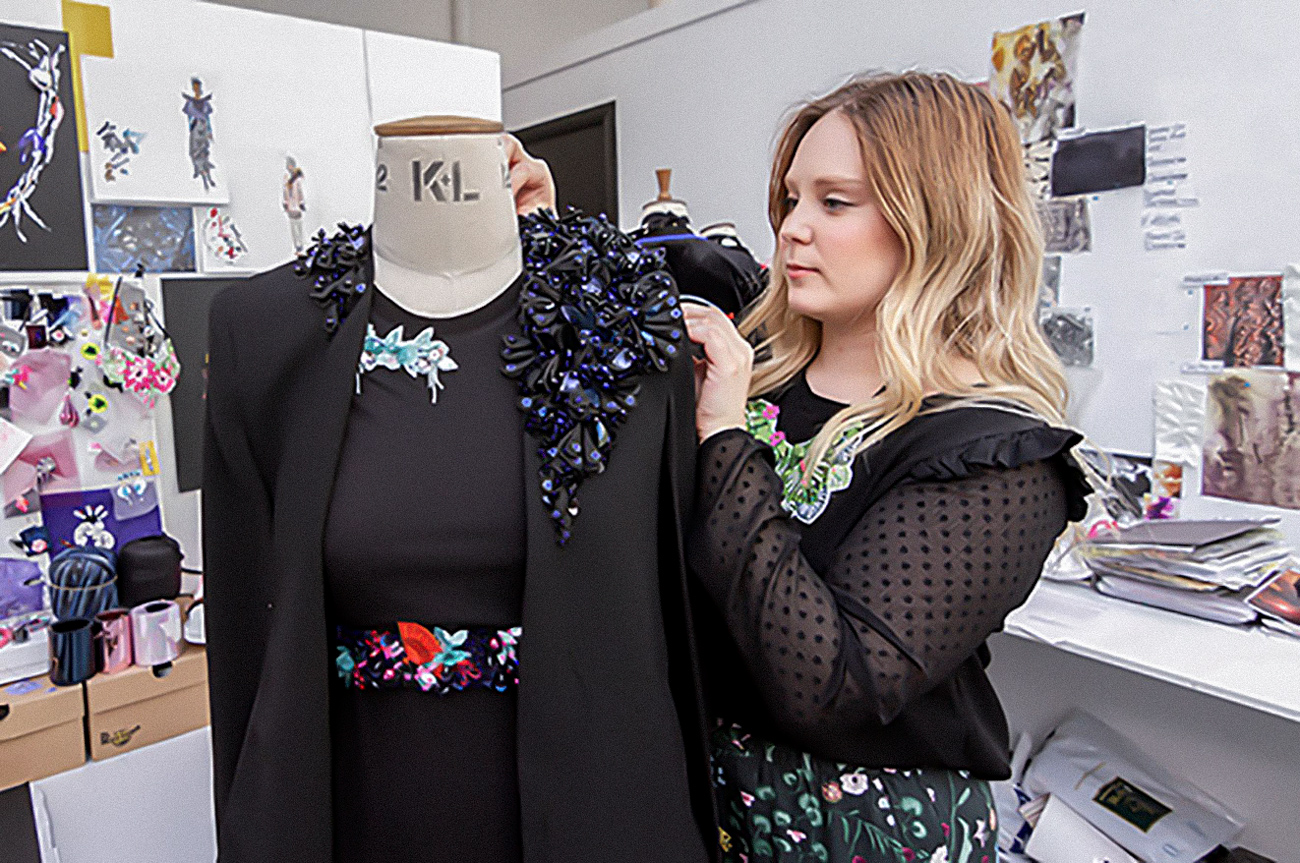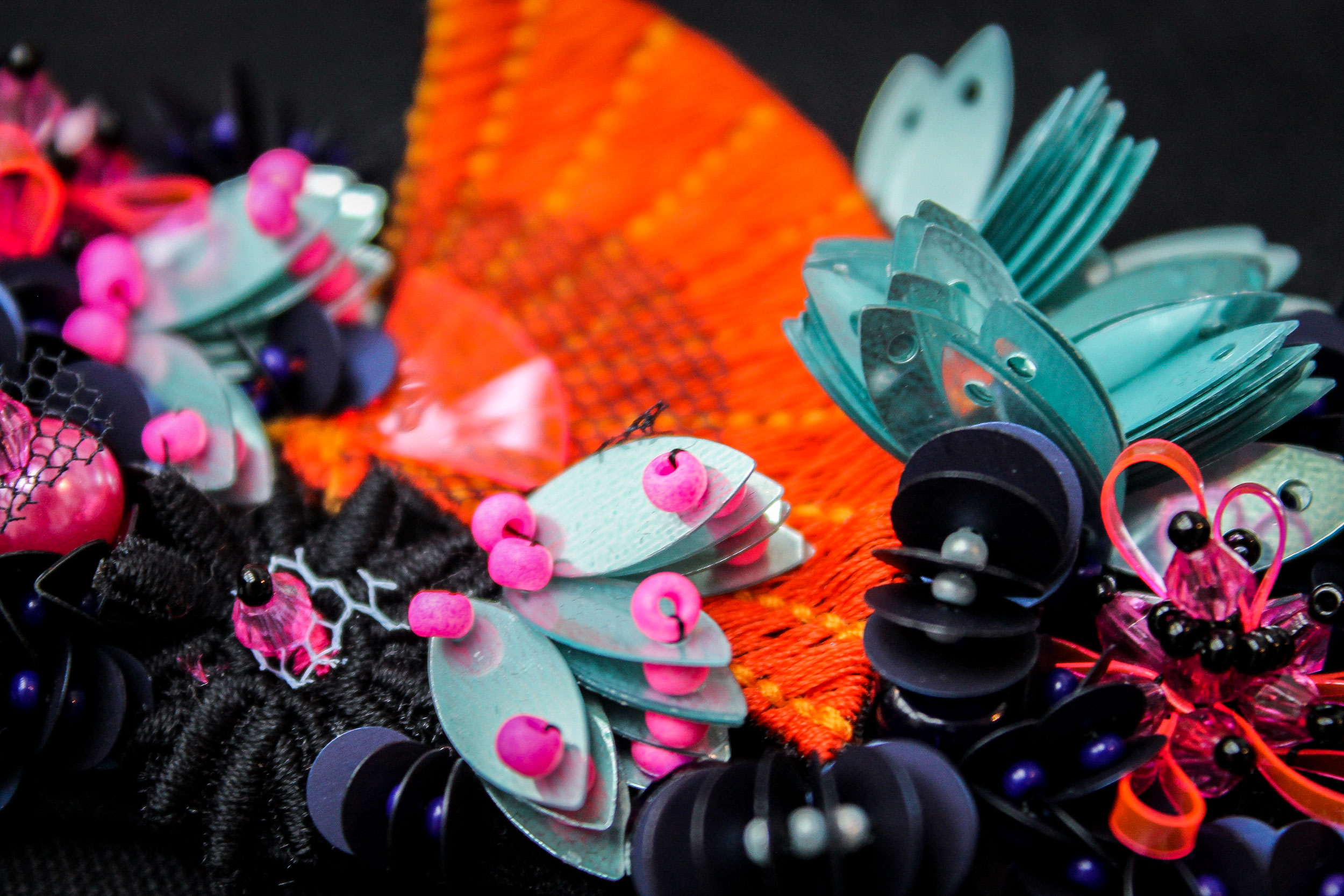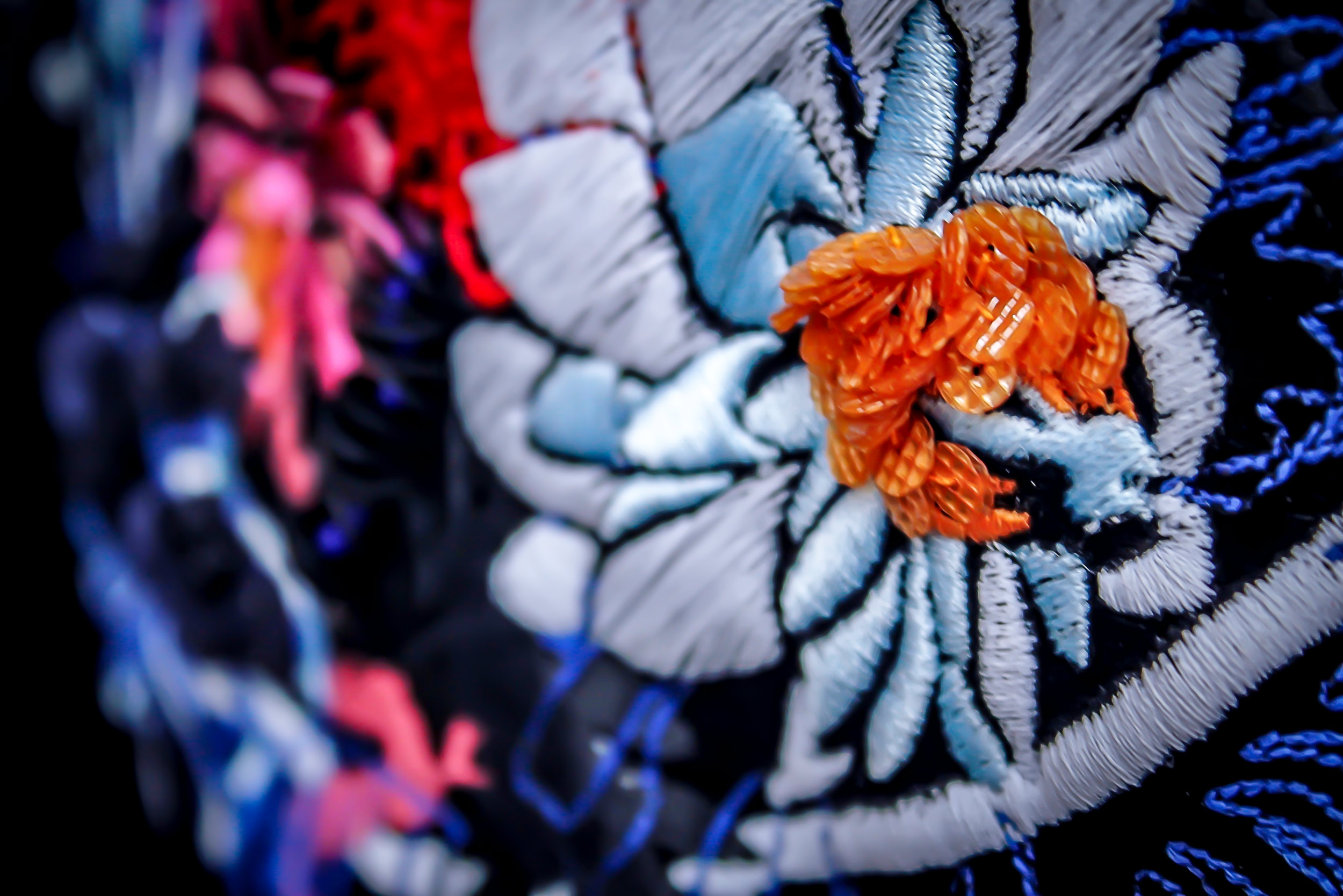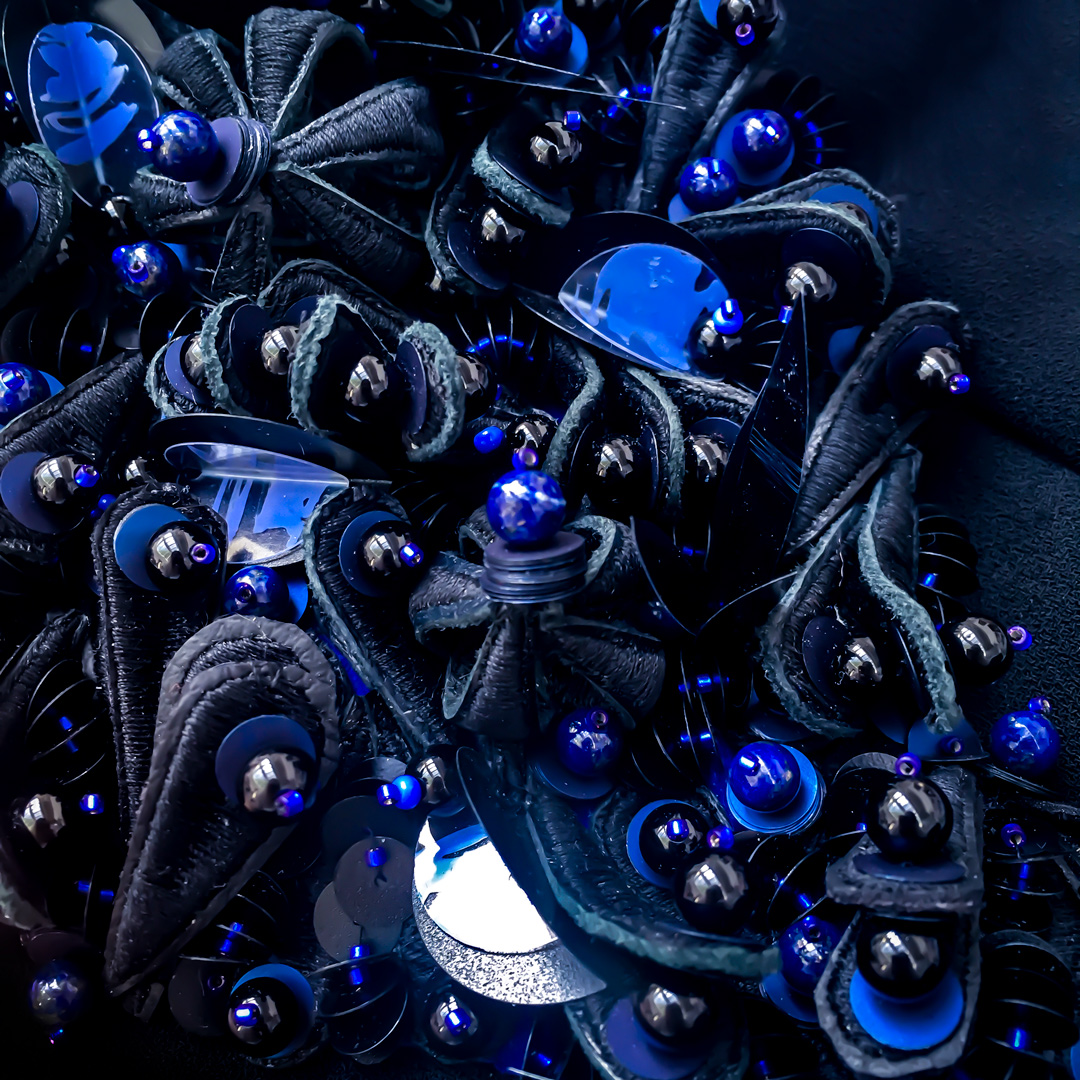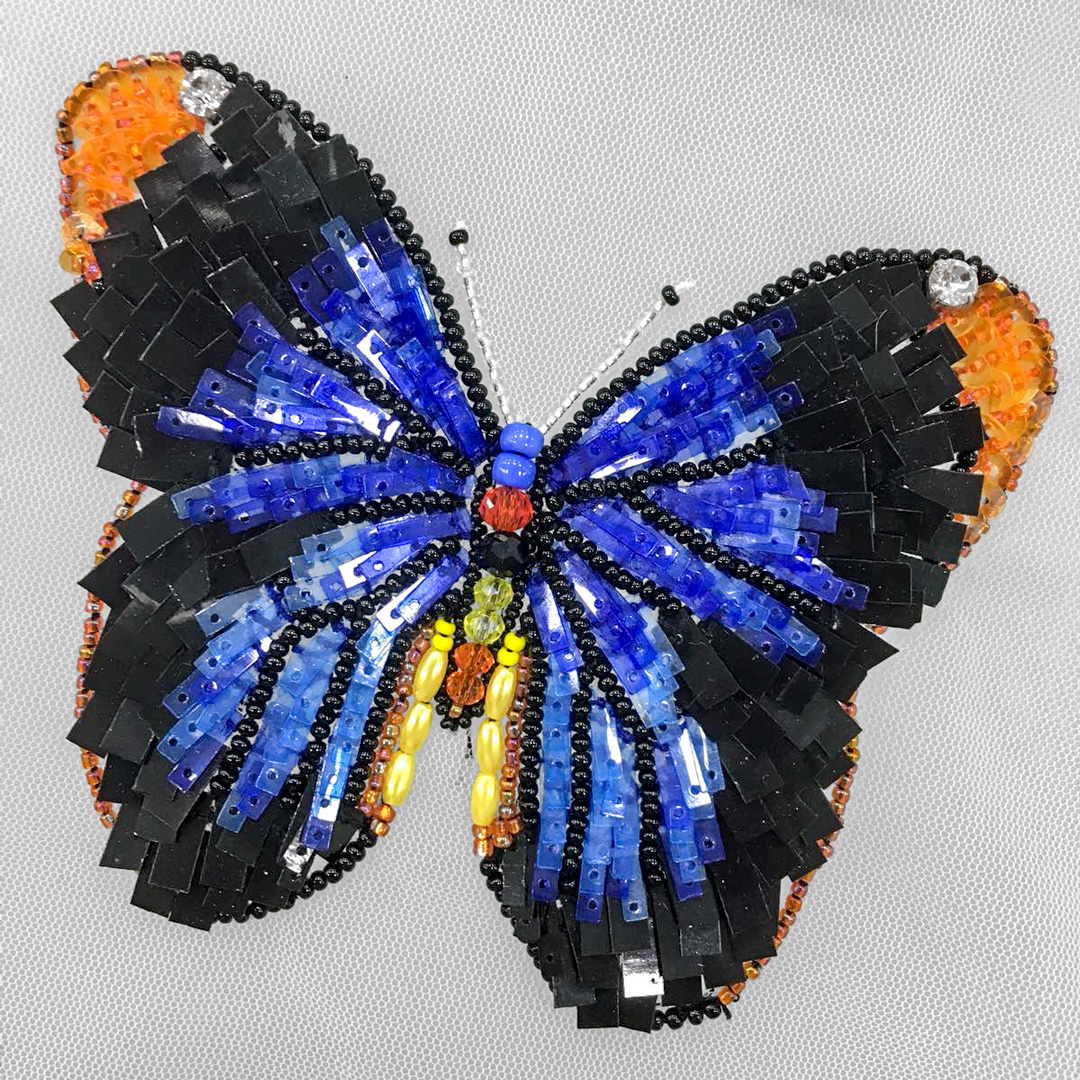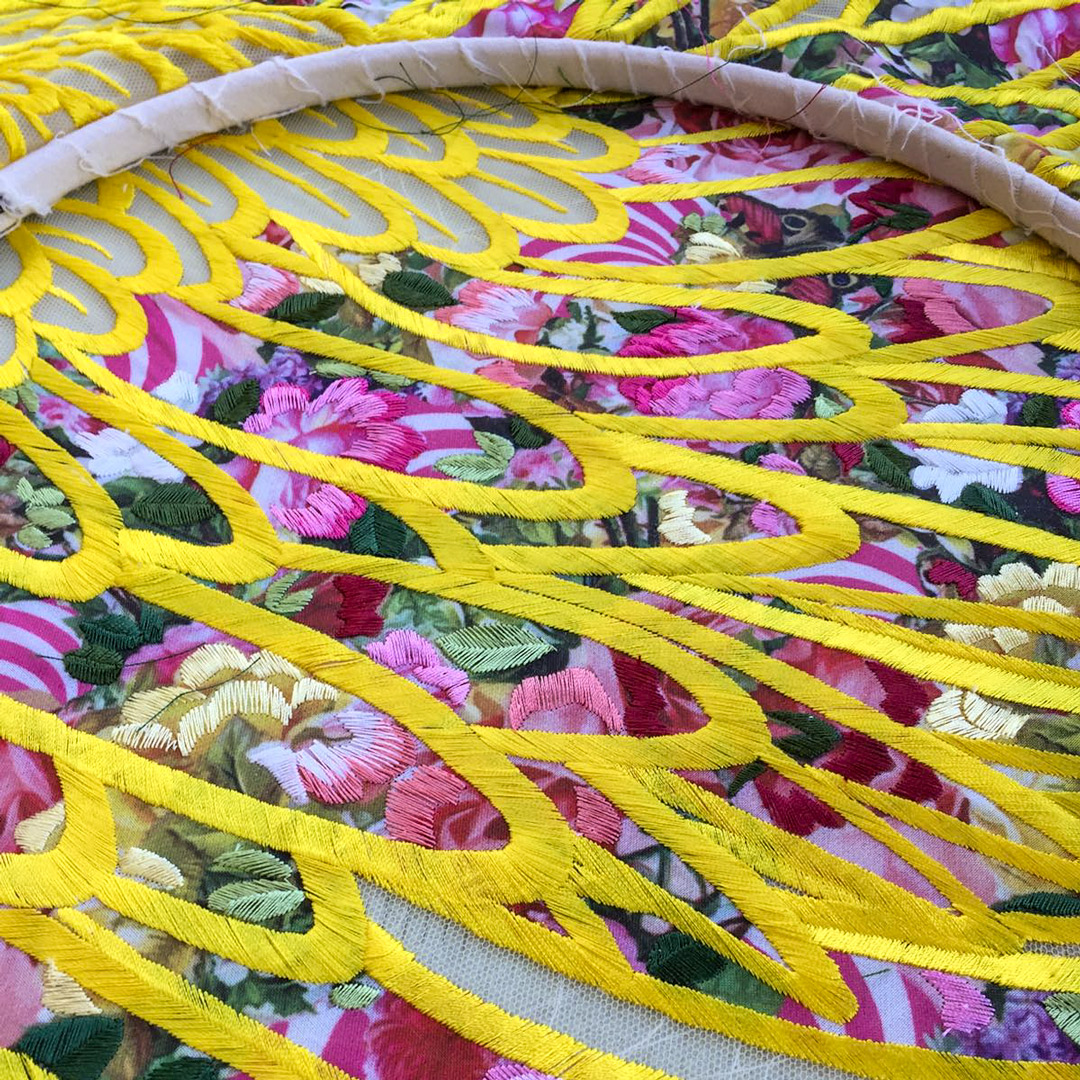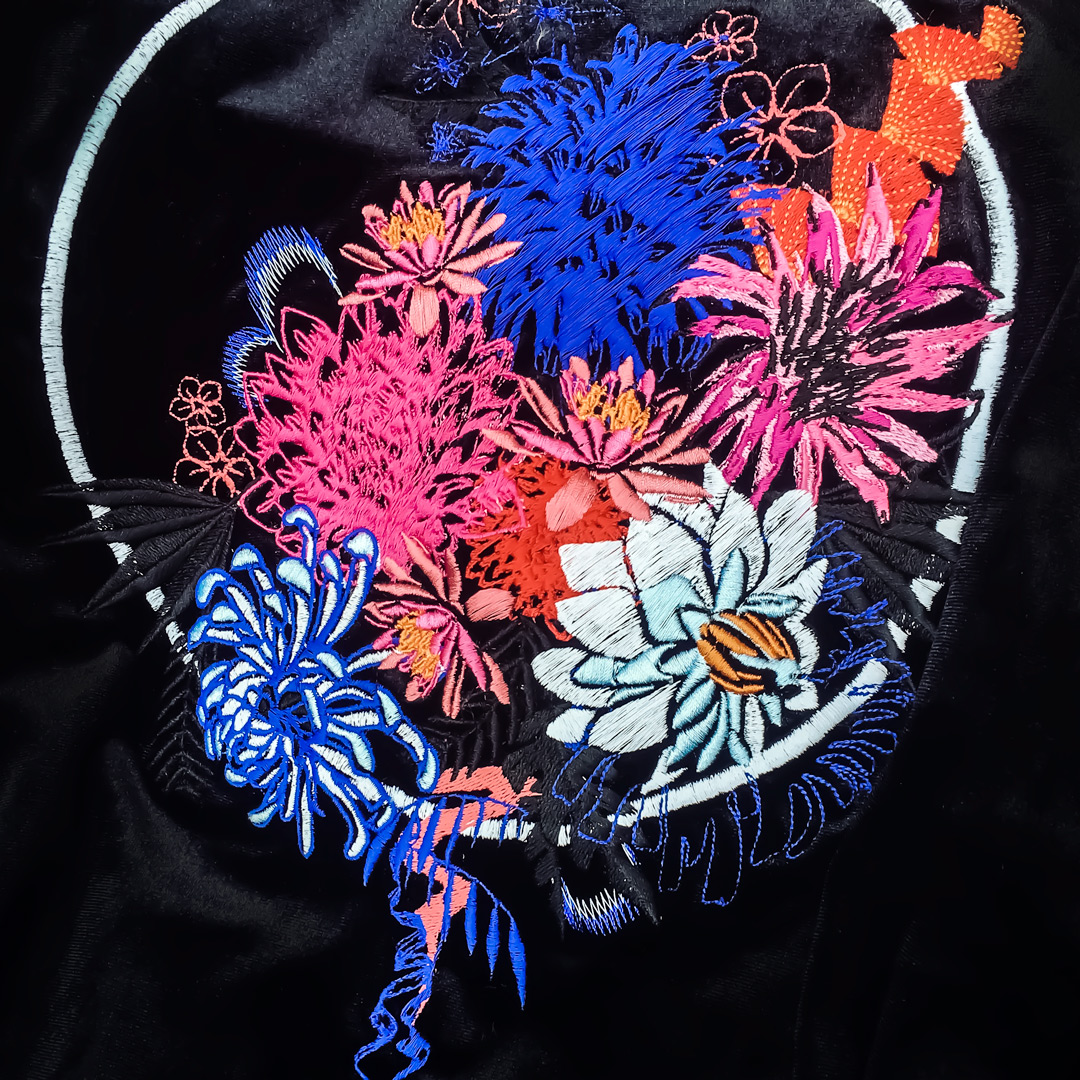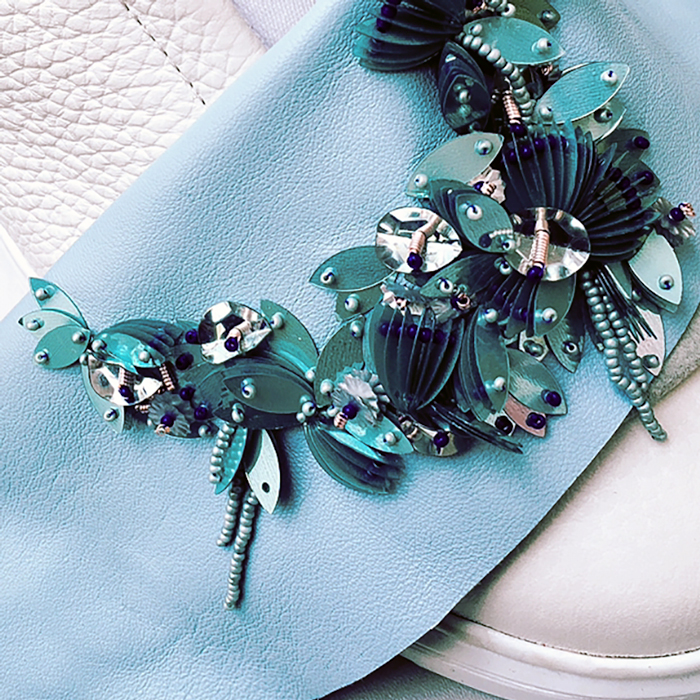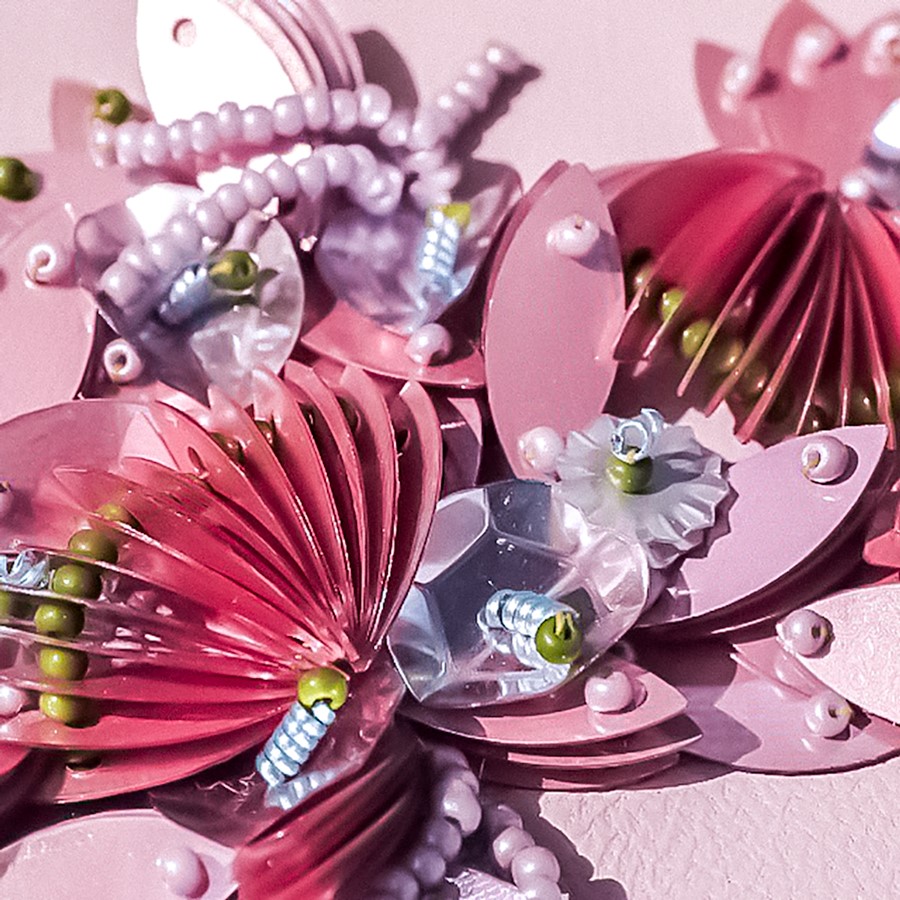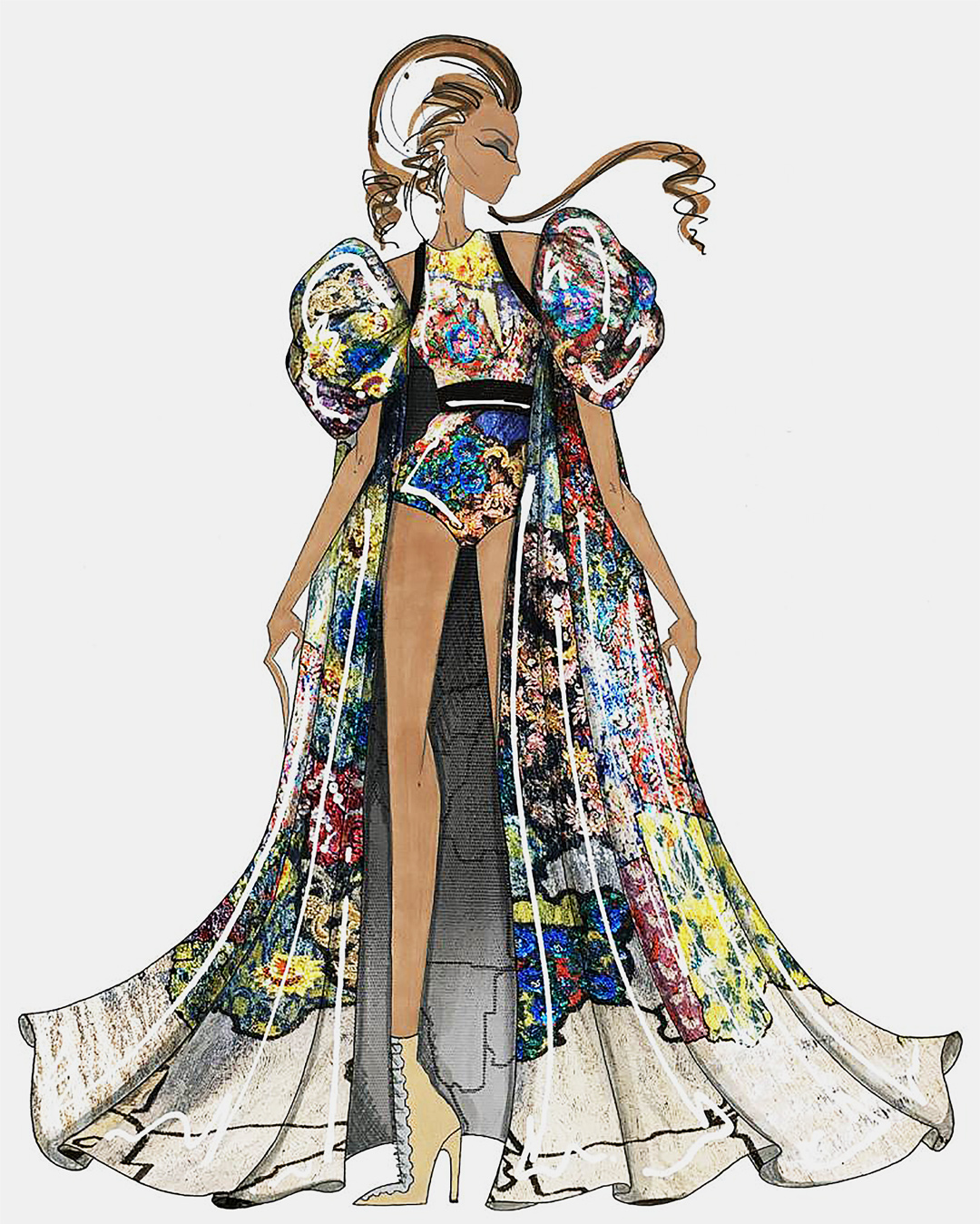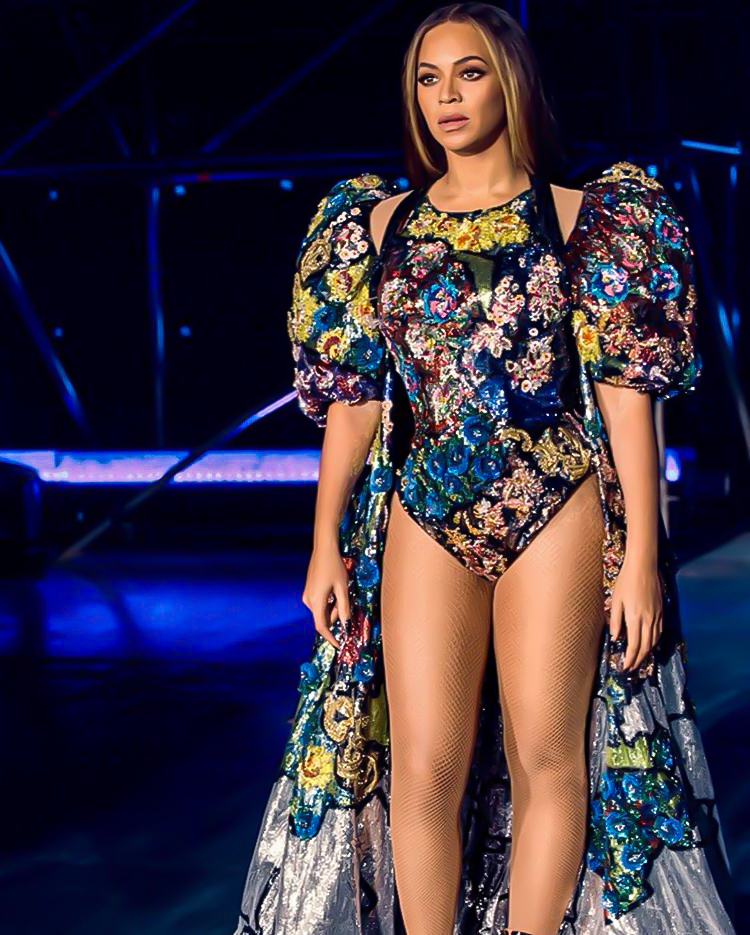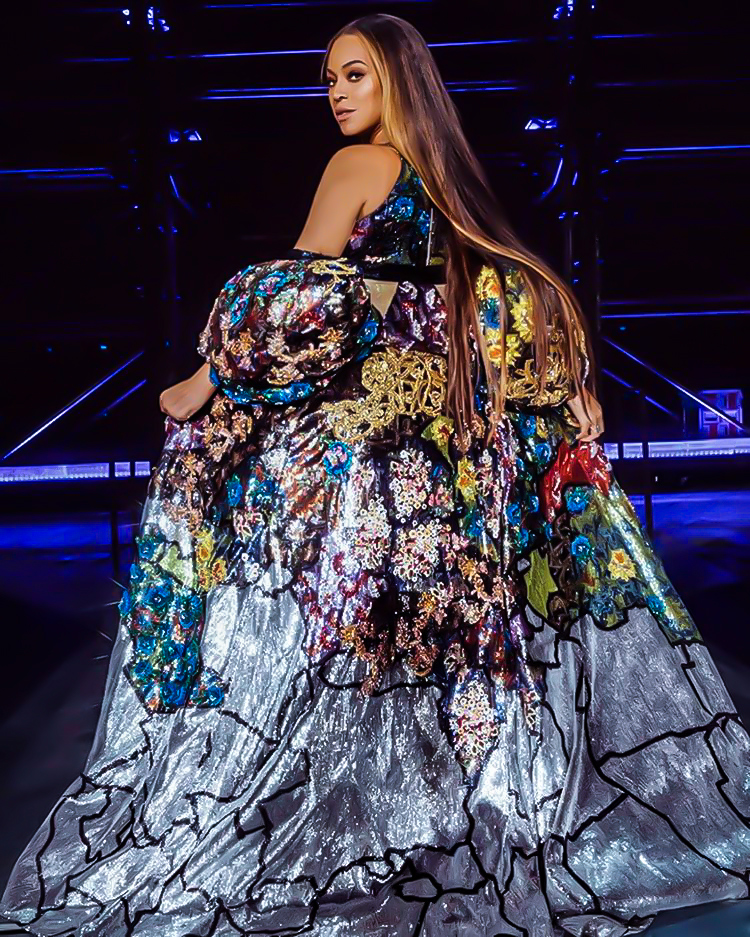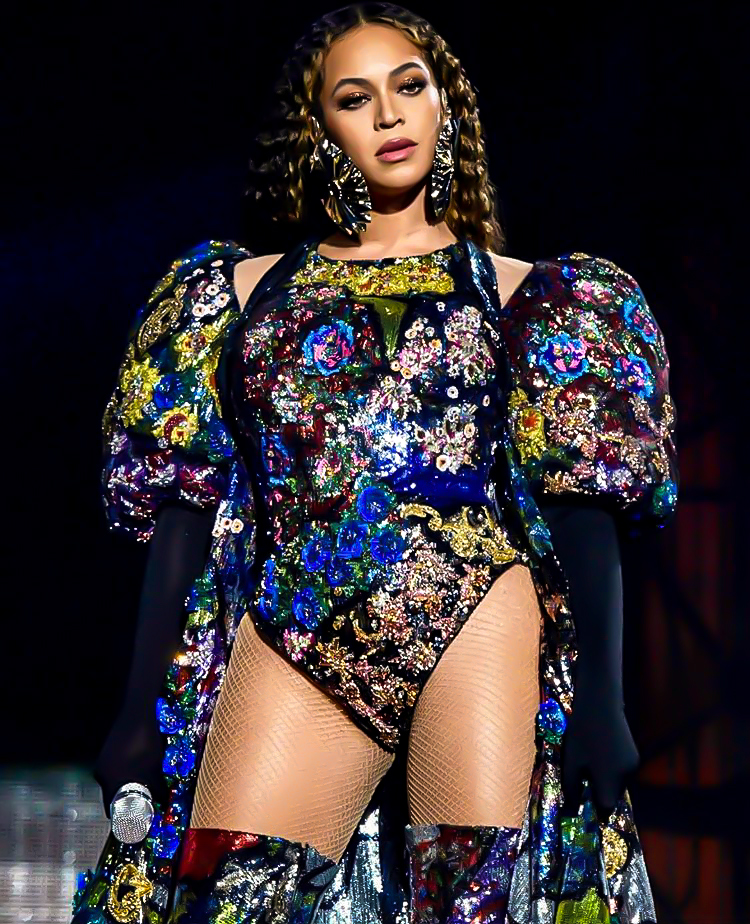LISS - EMBROIDERY DESIGNER
I was lucky enough to catch up with Liss Cooke, who is an embroidery designer at Mary Katrantzou. She works with machine embroidery, adding embellishments to garments using sequins, beads, and tonnes more intricate techniques, some of which are mind boggling in their complexity and truly original. We chatted about how she got into the industry, how home sewers can embellish their hand made garments, and her all-time favourite sequin. You can see her beautiful work here
What does an embroidery designer do?
I am an embroidery designer at Mary Katrantzou. I supervise and organise all the embroideries for the collection, both in house and out of house. Which can be a thousand different techniques, such as beading, intarsia, digital embroidery, laser cutting, all sorts of bits and bobs.
Why did you want to be an embroidery designer?
When I started I was more into print, but then I realized that I was the kind of person that can't leave something alone and it's never finished to me. So I would have a print but then I would do something else to it and then do something else to it. I was always an embellisher, even when I wasn't using sequins. I've always been into crafty projects and when I went to uni I just got really into embroidery and just really enjoyed it. I also found that I was way more interested in fashion than interiors, so all those decisions lead me here.
How and where did you learn your skill?
Honestly, just trying things out on my own. At uni we did get taught some techniques, but I think with embroidery, you literally have to just pick up a needle and start trying to do it yourself. During my MA, so many of the embellishments I was doing was just me testing different sequin embroidery ideas. Things like: how could I stack them, how can I use beads and sequins together, different patterns I can make, so it is a lot of trial and error.
How long have you been in the industry and where have you worked?
Around two and a half years. I started at a swatch design studio, where we were doing one off bespoke swatches. They were for some high end companies and a lot of high street brands. We made one off copyright designs that we sold to customers and they could put it into production. We basically only did the idea, which was nice because it meant you could be super creative everyday. Every sample that we did had to be totally different, which was hard but it was good. The designs were on little hangers and they looked like the front of a t-shirt. We would make different compositions, so sometimes it'd be coming over the shoulder or various positions. I did a lot of digital embroidery when I there, a lot of laser cutting. We did do some overseas projects as well, like fully beaded garments. A lot of it was in house beading, so we used beads and crystals in all different ways. It'd be like a little detail on something you might buy in Next. I did that for seven months and then did a mixture of different things, like a lot of freelance work. And then I started my own business, making embroidered jewellery. After that I did my MA last year and then in August of last year I got an internship at Mary Katrantzou and now I'm here full time.
The fashion industry is notoriously hard to get into – how did you get your foot in the door?
Lisa Salama, what a babe. I met Lisa at my uni when she came and did a lecture and then she was doing tutorials afterwards. At that point I had nothing to show for myself so I have no idea why she saw anything in me! I think I just had one sample to show her! Then I saw her again at New Designers at the Business Design Centre in Islington, London. Every uni in the country that has a textiles course, selects 10 to 15 people to exhibit. Lots of companies come to preview your work, and they have awards and competitions. I met with Lisa again and she gave me a business card and she was really nice about my work, as by then it had moved on a lot. She contacted me a few weeks later saying that there was an opportunity for a paid internship at Mary Katrantzou, and would I be interested, so here I am!
What is the best thing you were taught when you were starting out?
We got taught machine embroidery, which I really like. I love doing Irish machine embroidery, which is such a dying art. An Irish machine is a satin stitch machine where you have a pedal for your foot which controls the speed, but you also have a pedal by your knee, and that controls the width of the stitch. You have to move your feet and your knee together which is tricky to master. You can't just get one of those machines and know how to use it, they are really hard to get threaded up and it's super complicated. So that's probably one of the best things I've been taught and I would love to have one of these machines at home one day.
Watch video below to see how an Irish embroidery machine works
“I have old skirts that I've cut up because I like the fabric and then I'll applique it on to something. anyone could stitch flowers and different designs onto their clothes.”
Do you have any tips on how home sewers can include embroidery or embellishments on their homemade garments?
I have family members who constantly send me little bits of fabric or old jewellery that I can cut up and use the beads. Obviously its different to what I do at work, but at home I have loads of stuff, I have old skirts that I've cut up because I like the fabric and then I'll applique it on to something. I like sourcing things from here, there and everywhere.
I'm not an edgy person within my own work, I just want something pretty that looks nice and I'm happy. At home I don't think its too hard to do, anyone could stitch flowers and different designs onto their clothes, it looks cute!
What is your favourite tool to use at work?
I'm really lucky that at home I have a digital embroidery machine which some people will have. Obviously they're still expensive, but they're getting a lot more accessible. So I think home sewers are getting to know about them more and it's not just something that a business would have now. And then the other thing I would say is scissors! I feel like I spend my whole life cutting shapes and then stitching them on to something.
Do you have a favourite garment to embroider or a favourite style of embroidery?
I actually do have a favourite sequin. It is from a place called New Trimmings which is in London, it's the best sequin shop ever. My favourite are called 'boat shape sequins' they are shaped like a petal basically. They are flat but you can do so many things with them because you can fold them in so many different ways, and you can stack them and they just look amazing whatever you do with them.
What is the most exciting project you’ve ever worked on?
I feel like I would be shot if I didn't say Beyonce! That was crazy. Especially because we didn't know whether or not she was going to wear it until she walked out and she was wearing it. I was screaming in my house, trying to video the TV and take photos on my phone! The garment itself was a printed sequin bodysuit. The print was of the map of Africa as she was wearing it to perform at 'Global Citizen Festival 2018' which was a tribute concert to Nelson Mandela. We made probably over a thousand embroidery patches and within each of the countries, there was a different floral motif. Then we also made a matching cape that had similar patches all over it. It was a lot of work.
What is the best part of your job?
I think the stuff that we get to create. It's stressful and super busy, but it's always worth it because everything always looks incredible. I can't believe we actually get to make stuff like this for a job!
What advice would you give someone hoping to follow in your footsteps?
I would just say, be super creative. Don't worry about things going wrong because I feel like that's probably one of the things that's held me back because I would worry that it might not work. You have to follow what you want to do. Like I said, I've never felt like I've been an edgy designer, but I'm here, so I'm obviously doing something right! I've always thought, I'm not going to do something because I think other people will like it. I'll do it because I like it.
“I can't believe we actually get to make stuff like this for a job! ”
All images belong to Liss Cooke unless otherwise stated, and have been used with her permission.

